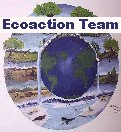Announcements and News:
Site Navigation:





 - Page Info - Title:
- Page Info - Title:
Page address:
File created:
Nov 15, 2001
Last modified:
Nov 26, 2001
Announcements and News: |
These are links to some of the pictures and web pages displayed on the classroom computer during this Section of the course. Most of them were displayed at full screen width so they could be seen better by all students. Teachers: Instructions on displaying pictures of your choice are at the bottom of the page.
| An animation of the disappearing glaciers in Glacier National Park (http://www.oocities.org/capecanaveral/7639/atmosphere/glcrsgne.htm) | 
|
| A map of
Global Warming Early Warning Signs
(http:// www.oocities.org/ capecanaveral/ 7639/ atmosphere/ hotmap.htm) From GLOBAL WARMING: Early Warning Signs at: http:// www.climatehotmap.org/ |

|
| An animated diagram of the
Nitrogen Cycle (http://www.oocities.org/CapeCanaveral/7639/atmosphere/pic1.htm). This graphic is from: http://www.nps.gov/olym/hand/process/ncycle.htm : |

|
| Smog map animation at http://www.eescilsm.org/bigpic.cfm?pic=http://www.epa.gov/airnow/2006/20060718/8a-east.gif
From: http://airnow.gov/index.cfm?action=airnow.displaymaps&pollutant=OZONE&StateID=8&domain=east&mon=11&dayofmon=21&yr=2006 |
>

|
| A satellite photo of the smoke plume from a forest fire in Kent, CT (http://www.oocities.org/capecanaveral/7639/atmosphere/kentfire.htm). From: http://rapidfire.sci.gsfc.nasa.gov/gallery/?2001317-1113 |

|
| Current radar enlarged to full window. From: Doppler3000 popup at WFSB Television |

|
| Animation of a dust cloud crossing the Atlantic(http://www.oocities.org/capecanaveral/7639/atmosphere/dusty2.htm, and a another crossing the Pacific from China. From: http://science.nasa.gov/headlines/y2001/ast26jun_1.htm |
 |
| An animatedMap of UV LevelsAug. 2000 - July 2001 (http://www.oocities.org/capecanaveral/7639/atmosphere/uv.htm). From: http://www.gsfc.nasa.gov/topstory/20010815uv.html |
To display other pictures from the web at full screen width, you can use the html code from any of these files:
1. You need to get the full internet address of the picture you want to display. An easy way to do this is to right mouse click on the photo, then choose "properties". Write down the address of the picture.
2. When you are on one of the pages above that you want to use to display your own picture, select "View" from the menu bar at
the top of your browser screen, then "Source" (this is for ms internet explorer
- Netscape has something similar).
3. On the page of code you see, find the brackets: <.....> that have something like this bewtween them:
img src="//www.blah.blah/blah.blah" width="100%"
4. Replace the address of the picture with the address of the one you want to display.
5. Save the file somewhere where you can find it on your computer. you can use file-open-browse to view it. Press F11 to maximize the display of any web page.




Page address:
![]()